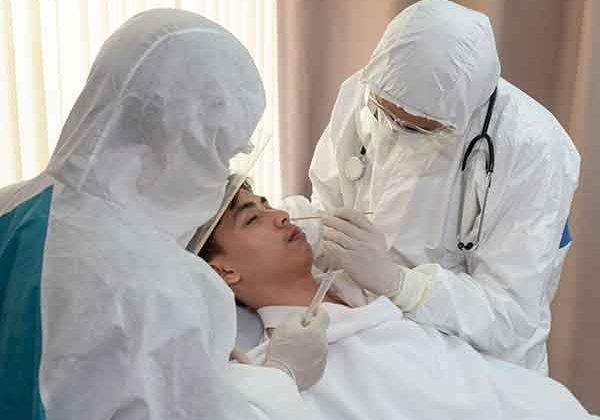Who is the future general practitioner?
by Francesco Carelli
We are currently experiencing a shift in general practice. Our patients are becoming increasingly knowledgeable with more access to expert information, which together with a longer life expectancy characterised by better quality of life has increased their expectations of health care professionals.
According to Bibi Holge-Hazelton, the concept of the traditional doctor has evolved too. The doctor ‘should’ meet the patient’s expected demands and at the same time keep pace with the introduction of technological tools which are being requested by patients as part of diagnostic tests oand treatments.1
Until now, we have essentially ignored the limited capacity of general practice. Certainly, doctors complain when new obligations are introduced, but but after a while they accept and adapt. It is however hardly a surprise to anyone that this means squeezing more work with a consequential extension of the work hours.
Like other people, doctors value leisure and closer relations with the family but have also to face other challenges … quality of care given, career progression, working hours with the fewest possible shifts and flexible working conditions… but are these attributes compatible with the work of general practitioners?
In this context, the consequences of the fact that currently a greater proportion of junior doctors is female, are yet unknown. Reaons for this may be due to complex and therefore less visible factors. In debates regarding the future for doctors, the positive significance that in times to come the medical profession will be evenly divided between men and women is accepted, but at the same time concerns exist whether general practice is becoming a female-dominated profession.2 This concern has its roots in the assumption that this will possibly result in a glass ceiling,for female doctors, and more requests for reduced working hours which may affect the continuity of the healthcare provision in general practice. The most efficient scenario in the medical profession entails a balance between genders.
A recent survey3 on medical students’ attitudes toward a career in general practice revealed that a career in general practice is not popular amongst medical students (13.8%), however it increased significantly when students had teaching in general practice. The results also showed that overall, a career in general practice is more popular in the female population.
Now, among general practitioners, prevails a sense of uncertainty regarding the content of their work and its lack of direction. We feel like a social worker, priest, marriage counsellor, educator, substitute mother or substitute daughter or brother … leving us to wonder why we have acquired all these roles. But the social worker has interminably long waiting lists, psychologists and therapists are expensive and the real pedagogues are increasingly giving the parents a bad conscience, whilst the close family bonds are not that close any more. Parents of small children are insecure and many old people are lonely. Much too often it is said “Go to your GP, he/she always has time.”
The General Practitioners are also feeling frustrated for the current reward mechanisms … being rewarded for the quantity and not for the quality of their work. In Italy, till now, the concept is … the more patients, the higher the salary. All these people knocking on our offices with their expectations and demands are at the same time our work, but at which price?
The questions: ‘Who are we?’ or ‘Who is the doctor?’ are relevant and actual because the all these vague tasks demand that the individual doctor interprets them in a complex relationship with his/ her professional background and experiences and combines them with the respective myths in the field, as well as with his/her subjective background consisting of the past experiences, social background, gender, ethnicity, etc.
In other words, it is not enough to assume that a doctor is a doctor and that his or her actions therefore are visible and predictable. In order to understand who the doctor is, it is necessary to include many complicated perspectives.4 These may vary depending on the interplay between politics and welfare structures, patient and professional interests, knowledge-development, democratisation, and technological development towards a more holistic healthcare provision keeping the patient at the centre of pharmaceutical care …
References
1) B. Holge-Hazelton – Is a doctor a doctor? Feminization of General Practice – Oral presentation at WONCA World in Orlando, October 2004
2) Margreth Nordgren – Feminisation of the medical profession – a gender and power perspective ( Nordgren 2000 )
3)B Ali and m Jones, Do medical students want to become GPs ?, Br. J. Gen. Pract. 2003; 53: 241.
4) F. Carelli – Flexibility for special clinical and non – clinical interests – Br. J. Gen. Pract. 2004 December , 54 ( 509 ) : 947-948..
Francesco Carelli is a General Practitioner and Professor of Family Medicine at the University of Milan. He is the Italian representative on EURACT’s Council and Director of Communications and Chairman of the Basic Medical Education Committee within EURACT. EURACT is the European Academyof Teachers in General Practice. He is member of the RCGP and the General Medical Council (London), Trustee for International Academy of Educational Services and International Ambassador for the Association of Health Care Professionals. He is also a member of the Italian Journalists Council as well as Editorial Board member of scientific journals for General Practice including EJGP, IJM, NWLJP and LJPC. He is also author of numerous papers published internationally.




